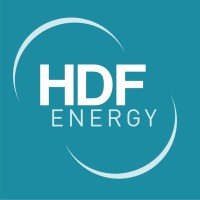BP study confirms green hydrogen at scale in Australia
Renewable hydrogen and ammonia markets need to be further advanced and on a significant scale to make general hydrogen fuel use commercially viable.

Producing green hydrogen and green ammonia using renewable energy is technically feasible at scale in Western Australia, though it would require significant investment, BP Australia feasibility study reveals.
The production looks more promising in the mid-west of Western Australia due to the existing infrastructure, access to land and abundant renewable energy resources such as wind and solar. Renewable energy can then be converted into the generation of green hydrogen or green ammonia. The study also confirmed strong demand from potential customers in the hard-to-abate sectors and for both local and export markets.
The distribution could be customised to suit customer requirements, including gaseous or liquid hydrogen or ammonia via pipeline, truck, train or ship.
The study also supports the fact that although depending on the location and scale, significant additional infrastructure investment would be required – particularly for port, electricity and water services.
The study findings are expected to help BP and Arena to help progress the development and use of green hydrogen energy.
Frédéric Baudry, president of BP Australia, said, “bp strongly supports the Australian government’s focus on technology and the Technology Investment Roadmap, which identified hydrogen as priority low-emission technology essential for the decarbonisation of industrial processes.”
Darren Miller, Arena CEO, said, “bp’s analysis of the economic opportunity presented by renewable hydrogen will help Australia determine how it can be scaled-up to satisfy future demand.”
Jason Fonti, GHD Advisory’s origination and value chain leader, commented, “The magic figure is producing hydrogen below $2/kg, and the pathway to get there is becoming clearer.”
The study was initiated in May 2020 and supported by GHD Advisory, Lightsource bp and the Australian Renewable Energy Agency (Arena). It encompassed both the financial and technical implications for a fully integrated renewable hydrogen and ammonia supply chain. It examined the hydrogen supply chain and domestic and export markets on a pilot scale (4,000 tonnes of hydrogen, producing around 20,000 tonnes of ammonia) and commercial scale (200,000 tonnes of hydrogen making about 1 million tonnes of ammonia).
It considered three different hydrogen production technologies (Alkaline, PEM, and a prototype electrolyser technology) and the plant power source was modelled as a mix of solar and wind with some battery support.
